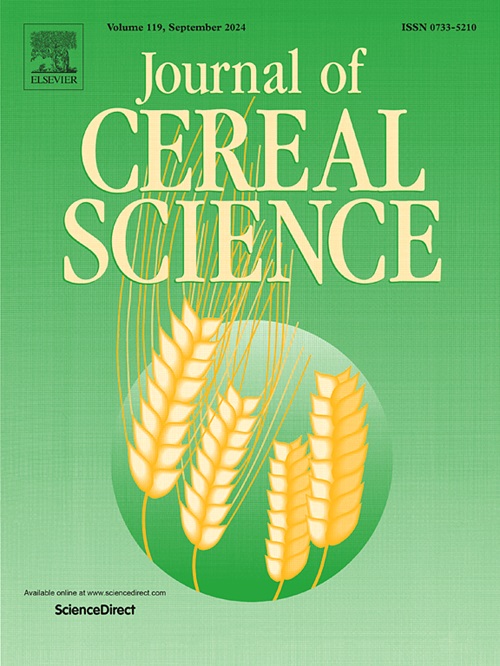Protein composition in ancient wheats is determined by ploidy level
IF 3.7
2区 农林科学
Q2 FOOD SCIENCE & TECHNOLOGY
引用次数: 0
Abstract
Gluten and amylase/trypsin-inhibitors (ATIs) are known triggers for wheat-related disorders. Ancient wheat species like einkorn, emmer, Khorasan wheat, Polish wheat and spelt are suggested to have fewer of these immunoreactive proteins compared to modern common wheat, because breeding for higher yields and increased resistance to plant diseases might have resulted in changes in the protein composition. Currently, there are only very few studies on the protein composition of ancient wheat species. This comparative study investigated the bread volume, protein content as well as gluten and ATI content and composition, along with the inhibitory activity in ten ancient wheat varieties cultivated under organic conditions. The varieties had different ploidy levels and were harvested in three consecutive years. The various analyses consistently concluded that differences in protein composition were associated with the different ploidy levels. This means that the results were similar for the diploid species (einkorn), the tetraploid species (emmer, durum wheat, Khorasan wheat and Polish wheat) and for the hexaploid species (spelt and common wheat), respectively. These results suggest that breeding has likely not increased the immunoreactive potential of wheat and ancient wheats are unlikely to provide improved tolerability for individuals with wheat-related disorders.

古代小麦的蛋白质组成由倍性水平决定
麸质和淀粉酶/胰蛋白酶抑制剂(ATIs)是小麦相关疾病的已知诱因。与现代普通小麦相比,古老的小麦品种,如小麦、二粒小麦、呼罗珊小麦、波兰小麦和斯佩尔特小麦,可能含有更少的这些免疫反应蛋白,因为为了提高产量和增强对植物病害的抵抗力,可能会导致蛋白质组成的变化。目前,对古代小麦品种蛋白质组成的研究很少。本研究对有机条件下栽培的10个古小麦品种的面包体积、蛋白质含量、面筋和ATI含量及组成进行了比较研究,并对其抑菌活性进行了研究。这些品种具有不同的倍性水平,连续3年收获。各种分析一致认为,蛋白质组成的差异与不同的倍性水平有关。这意味着二倍体小麦(einkorn)、四倍体小麦(emmer、durum小麦、呼罗珊小麦和波兰小麦)和六倍体小麦(斯佩尔特小麦和普通小麦)的结果是相似的。这些结果表明,育种可能没有增加小麦的免疫反应潜力,而古代小麦不太可能提高小麦相关疾病患者的耐受性。
本文章由计算机程序翻译,如有差异,请以英文原文为准。
求助全文
约1分钟内获得全文
求助全文
来源期刊

Journal of Cereal Science
工程技术-食品科技
CiteScore
7.80
自引率
2.60%
发文量
163
审稿时长
38 days
期刊介绍:
The Journal of Cereal Science was established in 1983 to provide an International forum for the publication of original research papers of high standing covering all aspects of cereal science related to the functional and nutritional quality of cereal grains (true cereals - members of the Poaceae family and starchy pseudocereals - members of the Amaranthaceae, Chenopodiaceae and Polygonaceae families) and their products, in relation to the cereals used. The journal also publishes concise and critical review articles appraising the status and future directions of specific areas of cereal science and short communications that present news of important advances in research. The journal aims at topicality and at providing comprehensive coverage of progress in the field.
 求助内容:
求助内容: 应助结果提醒方式:
应助结果提醒方式:


